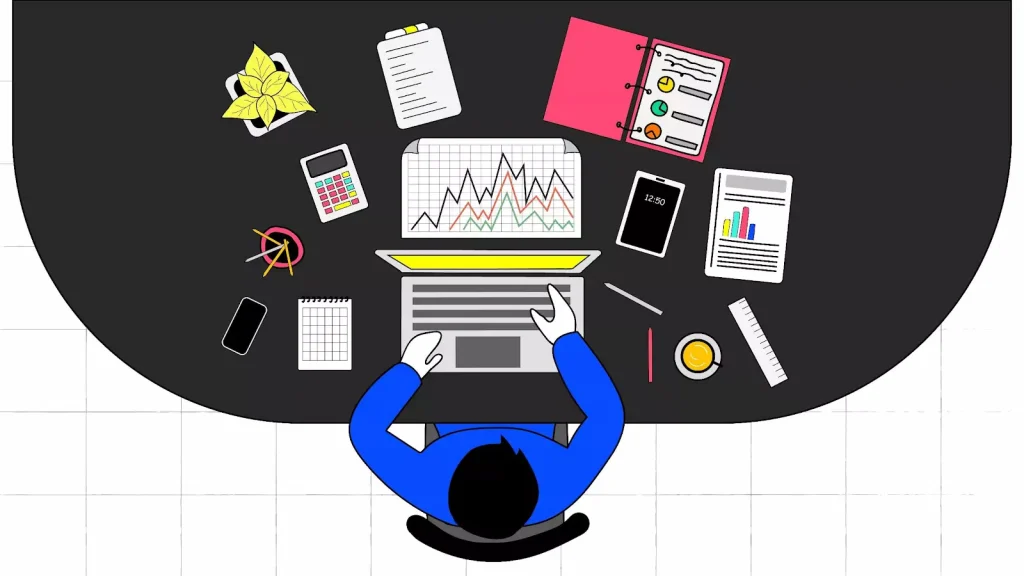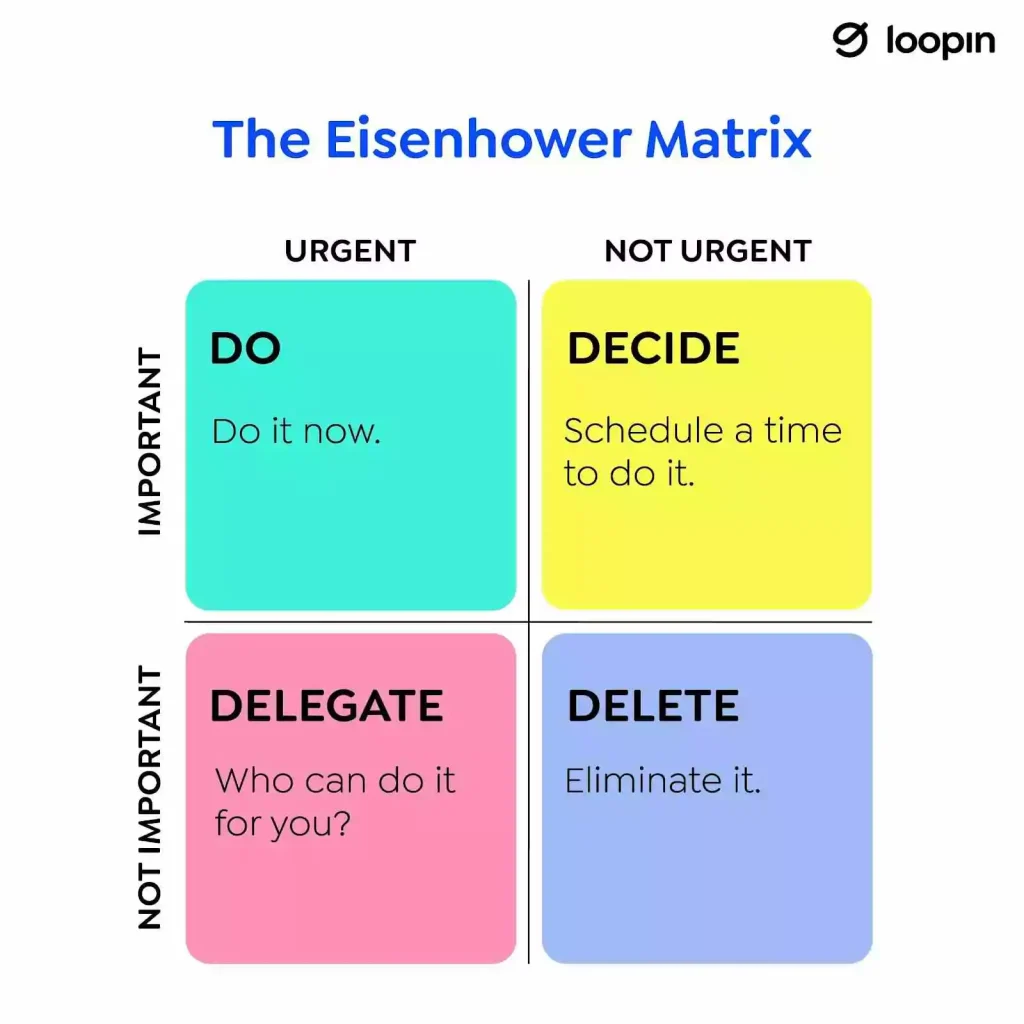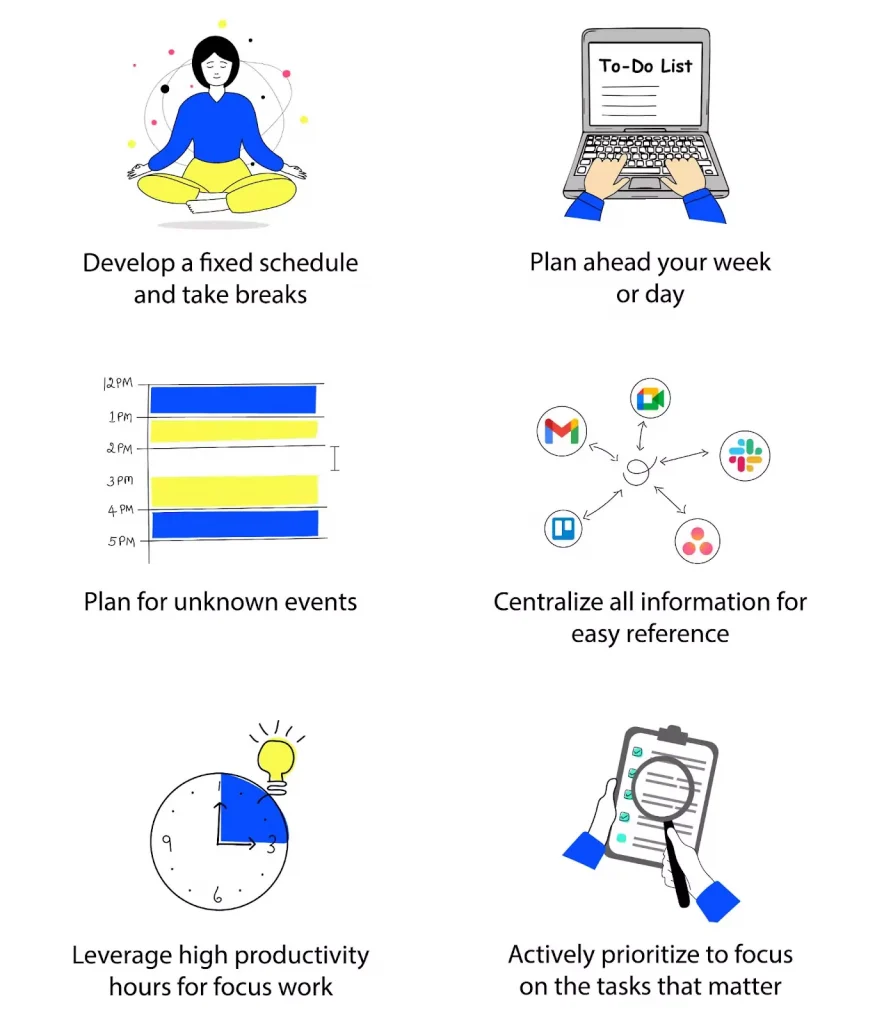As a freelancer managing your time may be one of the most challenging things that you need to accomplish consistently, day after day. Since you are your boss, you are not bound by any external time factor besides your commitments to timelines and goals.
To add to the long list of projects you are managing, you’re also looking for new high-paying customers, building your personal brand, updating your social media networks, etc. Safe to say, being frugal with your time investment and prioritizing the unending list of tasks becomes your second nature.
While there is no secret sauce to being productive and efficient, it is an excellent practice to be conscious about where you are spending time, review your work week and continuously identify opportunities for improvement. This process is derived from the concept of “Kata” practised in martial arts. “Kata” is a process that uses continuous practice and retrospective analysis to help individuals make small but significant improvements in their skillset everyday compounding to a big improvement compared to day one.
In this guide, we share six practical time management tips that you can implement today to manage your time more efficiently.
Let’s dive in!
Time management tips to work more efficiently as a freelancer
- Develop a fixed schedule and take breaks
Flexibility and working on your terms are the two most significant selling points for freelancing. Freelancers enjoy being their boss and having complete autonomy over their time. However, with great power comes responsibility! While flexibility is a fantastic benefit, it should not be confused with a lack of schedule. It can be extremely easy for freelancers to not have a fixed schedule or a predefined time for when they will begin and end their workday. That’s why, they can utilize an automatic time tracker to manage their time efficiently.
Developing a fixed schedule and taking regular breaks are important for maintaining productivity and work-life balance. This is where the time calculator becomes invaluable. By calculating the time between two points and aiding in scheduling, this tool helps freelancers plan their workday, ensuring they adhere to a structured routine. With the ability to add or subtract time seamlessly, freelancers can manage their tasks efficiently, optimize productivity, and maintain a healthy balance between work and personal life.

Lack of planning can lead to one of the two things (or maybe both!) –
1. You become a master procrastinator. Days slip by, and those deadlines come closer with every single day you choose not to be efficient. This results in you burning the midnight oil and working on weekends to meet the deadlines. Even worse, in some cases, you might have to request deadline extensions which does not bode well for your brand and future opportunities
2. You end up burning out. Since you do not have a defined schedule which means you do not have visibility into your availability. As a result, you end up signing up for more than you can deliver and then working through the night to meet timelines. Moreover, not defining a schedule can also lead to you not taking enough breaks to decompress and disconnect from your work which can also burn you out.
Check out the ways to deal with real freelance burnout.
So, you must create a daily ideal schedule for yourself and stick to it. It doesn’t have to be the standard 9 – 5 time slots but rather a plan that works for you.
Recommended Reads: Top E-Invoicing Software in India: Detailed Analysis
- Plan ahead your week or day
Whether you like to get visibility into an entire week’s worth of tasks or simply the next day, plan! If you are working Monday through Saturday, set aside a couple of hours on Friday evening to go through the list of tasks. Take this time to identify the tasks you would like to accomplish in the coming week and block time to work on them. If you are looking to meet people next week, send meeting invites in advance to secure your calendar and provide structure to your upcoming week.
Unlock the gateway to a highly productive week with the daily planner app. By meticulously planning your day and week, you eliminate the need to spend precious time figuring out your tasks.
- Plan for unknown
The secret to ensuring that you stick to your plan? Plan for unknowns.
It is often said that nothing goes as planned, and that is where you have to be smart about your planning. There are always last-minute requests, meeting invites, personal commitments, forgotten appointments/dinner with friends, etc., that come up, which might prevent you from delivering on your commitments and sticking to your schedule.
The key here is to NOT plan for 100% of your capacity. This is very similar to how you would plan your project timelines by accounting for buffer time, setting aside a fraction of your time for these last-minute requests, and allowing yourself to be randomized without any consequence.
Going back to the concept of Kata, it is essential to understand that planning your workweek and identifying a process that works for you is a cycle of continuous improvement. Once the workweek is over, take some time to reflect upon what worked or did not work in your last planning cycle and make the needed improvements in your upcoming week.
Recommended Reads: Top Invoicing Software For Consultants
- Centralize all information for easy reference
As a freelancer, you might leverage multiple tools and forums to do your work. You engage with your clients and gather requirements across numerous platforms like audio/video meetings, email exchanges, instant messaging applications like Microsoft Teams/Slack, etc. In addition to it, depending upon your nature of work, you might also be collaborating with your clients through online applications like Trello, Notion, Asana, etc. Moreover, you might have your own note-taking applications for your work. That is a lot to keep track of!
Sifting through multiple avenues to find the correct information contributes to losing productivity and inefficiency.
It is an excellent practice to have a centralized location to manage your work so that any information you need to complete your task effectively is at your fingertips. A tool like Loopin can simplify your workflow. It seamlessly integrates all your work applications and is a one-stop-shop for all your personal notes, meeting notes, tasks, due dates, references etc.
- Leverage high productivity hours for focus work
Most folks go through a cycle of high and low productivity zones. Some individuals might be super productive in the morning and all set to tackle the most challenging task on their list. In contrast, others might prefer a slow morning with a few meetings but would eventually get their most productive self during the evening.
Irrespective of when you are in that zone of high productivity, the last thing you would want is to be in an inefficient, non-productive meeting when you could have used that energy and focused on completing your tasks.
As you plan your week, block time for each task you want to accomplish. This ensures that you have a line of sight as to when you will get to those tasks during the week and have set aside dedicated time to work on them. It would help if you also made it a practice to schedule time for lunch and other activities that you want to make time for.
By blocking time for activities that matter, you are now controlling your most valuable asset – your time.

As you plan your schedule and block time for focus work, remember that this is again an iterative process. You might end up spending more time on a task than planned, or there might be days when you completed the job soon and earned a much-deserved longer break. This is where the exercise of reflecting on your week helps. Performing this exercise over time will help you precisely estimate your time block.
One of the most popular frameworks to block time efficiently is – The Pomodoro Technique. By implementing this framework, you will stay focused on a task by taking deliberate breaks. Usually, one Pomodoro is a 30-minute time block which is split into 25 min of focus work followed by a 5-minute break. To implement this framework, estimate how many Pomodoro or “30-minute blocks” it will take to complete the task. Once you are done with 4 Pomodoro, take an extended break before jumping back in!
Here you can read about the essentials you may need while working at home.
- Actively prioritize the tasks that matter
As a freelancer, you probably have a million things to do at any given time. This can include working on projects, stakeholder/client communication, learning required skillsets for marketing, and attending networking events to grow and build your brand.
Needless to say, everything on your to-do list seems important! Implementing a task prioritization framework like Eisenhower Matrix can help you focus on the right things.
The underlying concept behind this framework is to differentiate between Important vs. Urgent tasks. You might be spending your time and effort on urgent tasks that seem important at the moment but are not crucial in the larger scheme of things. As a result, we focus on urgent tasks and fail to prioritize necessary and critical tasks.
To implement this framework, start by categorizing all your tasks in four buckets –
1. Important and urgent: You should prioritize these tasks and accomplish them quickly
2. Important but not urgent: You should schedule these tasks and create focus blocks to complete them. By scheduling the tasks, you are making sure that they do not fall through the cracks
3. Not important but urgent: You should identify ways to complete these tasks with minimum time investment. This can be achieved by either delegating such tasks or for recurring activities like status updates identifying ways to automate the task.
4. Not important and not urgent: These tasks should be eliminated from your to-do list.

Conclusion
Remaining productive throughout the day, day after day can be challenging. With discipline and practice, time management can help you accomplish much more – keep clients happy, build your brand presence, achieve work-life balance – and inch closer to success.
Here’s a quick recap of the time management tips:
- Develop a fixed schedule
- Plan your week or day ahead
- Plan buffer for unknown events
- Centralize information for easy reference
- Leverage high productivity hours for focus work
- Prioritize tasks that matter

Author Bio
Ravisha is the content lead at Loopin. Loopin brings meetings, notes, and tasks together on your calendar to create calendar-first workflows. Stay in the loop with Loopin on Twitter and LinkedIn.
Recommended Reads:
15 Best Invoicing Software In 2024
Top 10 Inventory Invoice Software
Top 7 Invoice Generator Software


















